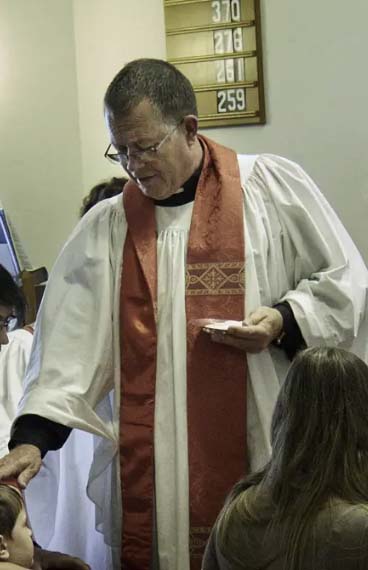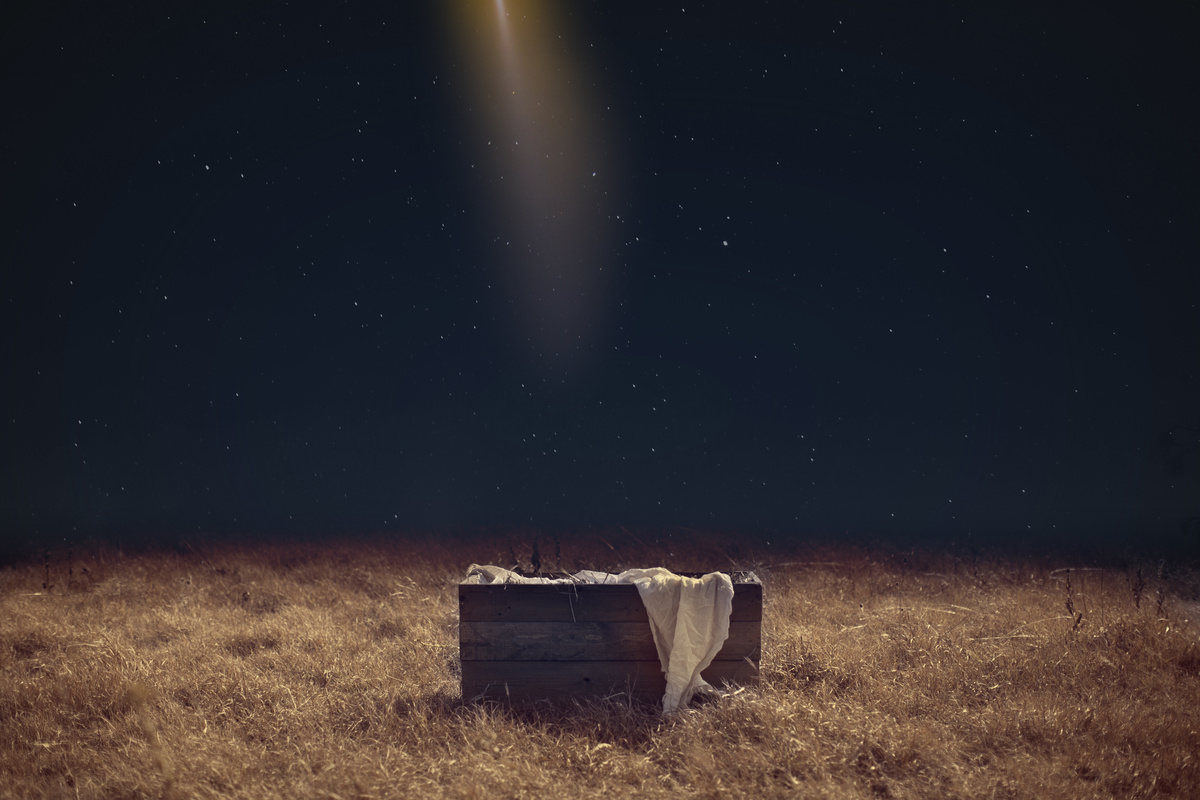On the ancient church calendar, August 6 is the feast of the Transfiguration of Jesus Christ. So, what is that all about you might ask?
The Transfiguration is considered a pivotal moment in the ministry of Jesus as it revealed his divine nature and affirmed his identity as the Son of God to his disciples. It also served as a confirmation of the continuity between the Old Testament (represented by Moses and Elijah) and the New Testament (Jesus' teachings).
The event was a glimpse of Jesus' heavenly glory before his crucifixion and resurrection. It provided the disciples with a profound spiritual experience and strengthened their faith as they witnessed the divine manifestation of Jesus.
During the Transfiguration, Jesus took three of his disciples—Peter, James, and John—to the mountaintop. There, something extraordinary occurred. Jesus' appearance was dramatically transformed, and his face shone like the sun, while his clothes became dazzling white. Additionally, Moses and Elijah, two revered figures from the Old Testament, appeared and were seen talking with Jesus.
The Meaning of the Transfiguration to the Early Church
In the first centuries of Christian history, the church recognized the significance of the Transfiguration, and began to celebrate it as a special day or feast, where the entire church would come together and discuss its significance.
The Feast of the Transfiguration of Jesus Christ is believed to have been first celebrated in the Eastern Christian Church. The exact date of its origin is not certain, but it is believed to have been established in the 4th or 5th century.
One of the earliest references to the Transfiguration feast can be found in the writings of St. Gregory of Nyssa, a prominent early Church Father, who mentioned the celebration of this event in the 4th century. The feast was already well-established by the time of the Council of Chalcedon in 451 AD, where it was officially recognized and included in the liturgical calendar. In the Western Christian Church, the Feast of the Transfiguration was introduced later, around the 8th century. Pope Callixtus III made it a universal feast in the Roman Catholic Church in 1457.
Overall, the Feast of the Transfiguration has been celebrated for centuries, and its observance has become an integral part of the Christian liturgical calendar, occurring on August 6th in both the Eastern and Western traditions.
Why Does the Christian Calendar Matter?
Having introduced the feast we’re celebrating today, I want to take a little time to reflect on the importance of the Christian calendar. Our Christian calendar, also known as the liturgical calendar or church year, is a rich tapestry of seasons, feasts, and observances that guide our spiritual journey throughout the year by focusing the us on specific events or topics.
The Christian calendar is not merely a collection of dates or historical events but a profound reflection of the life of Christ and the central teachings of our faith. It begins with the season of Advent, a time of preparation, as we await the coming of our Lord. Advent reminds us of the hopeful expectation of God’s people before the birth of Jesus and prompts us to renew our hope in the promise of His return.
From Advent, we have the joyous celebration of Christmas, commemorating the incarnation of God as a human being in the person of Jesus Chris is fully God and fully man. The incarnation is a profound mystery that speaks to the heart of our faith—the idea that God came down to dwell among us, to experience the human condition, and to offer us the gift of salvation by his sacrifice on the cross. This sacrifice paid our sin debt.
As the Christian calendar unfolds, we journey through different seasons such as Epiphany, Lent, Easter, Pentecost, and Ordinary Time. (Ordinary time is those periods of the liturgical year that are outside the major seasons of Advent, Christmas, Lent, and Easter. It is the time between these significant liturgical seasons when the Church reflects on the life and teachings of Jesus Christ in a more general and continuous manner.)
Each season has its unique focus and purpose, allowing us to immerse ourselves in the various aspects of Christ’s life and teachings. There are also days to honor notable saints of history and to focus on key concepts such as the Trinity.
The Christian calendar reminds us of the centrality of Jesus Christ in our lives. It guides us through the rhythm of remembrance, reflection, and response to the truth of God’s love and grace. It helps us to grow in our understanding of the Gospel and deepens our relationship with our Savior.
Moreover, the Christian calendar fosters unity among believers across denominations and across countries around the world. By celebrating the same seasons and feasts, we join millions of Christians worldwide in a shared journey of faith and devotion. It connects us to the historical and global body of Christ, reminding us that we are part of something much bigger than ourselves.
The Christian calendar is not a mere tradition but a sacred tool that enriches our walk with Christ and draws us closer to Him. It provides us with a structured and meaningful way to journey through the life of Jesus, allowing us to grow in faith, hope, and love. With this knowledge, we can go deepen our devotion, ignite our worship, and strengthen our commitment to following Christ each day of our lives. And using the Christian calendar, we should use it to focus day by day on core topics of the faith and today’s topic is the Transfiguration of Jesus Christ.
Different Accounts, Same Transfiguration
The Transfiguration of Jesus Christ is a significant event recorded in the New Testament of the Christian Bible. It is described in the synoptic Gospels — Matthew, Mark, and Luke. The event took place on a mountain, traditionally believed to be Mount Tabor in Israel. The Transfiguration of Jesus Christ appears in three of the four canonical gospels in the New Testament. (Matthew 17:1-13, Mark 9:2-13, and Luke 9:28-36) Luke's version of the Transfiguration in our reading today is also comparable to the previous two accounts.
Note: When we say “synoptic gospels“, we refer to three of the four canonical gospels found in the New Testament of the Christian Bible: Matthew, Mark, and Luke. These three gospels are called "synoptic" because they share a significant amount of common material and provide a similar view of Jesus' life, ministry, teachings, and miracles. The term "synoptic" comes from the Greek word "synoptikos," which means "seen together." When comparing the texts of Matthew, Mark, and Luke side by side, it becomes evident that there are many overlapping stories and sayings, often presented in a similar chronological order. This similarity allows scholars and readers to study the gospels in parallel to gain a comprehensive understanding of Jesus' life and teachings. The Gospel of John is the fourth canonical gospel but is not included in the synoptic category due to its distinct theological perspective and different narrative style. While all four gospels provide valuable insights into the life of Jesus, the synoptic gospels offer a harmonious and complementary portrayal, making them a central focus of biblical studies and Christian theology.
These three synoptic gospels provide slightly different details about the Transfiguration event but all affirm the significant spiritual experience of Jesus' transfigured appearance and the appearance of Moses and Elijah on the mountaintop.
The Old Testament reading that best prefigures the Transfiguration of Jesus Christ is often considered to be the story of Moses' encounter with God on Mount Sinai, which we read today in Exodus 34:29-35. In this passage, Moses' face shone brightly after being in the presence of God, symbolizing the divine transformation and glory. This event foreshadows the Transfiguration, where Jesus' appearance was also transformed and radiant on the mountain before His disciples.
Throughout the history of the Christian Church, Psalm 104 is often associated with prefiguring the Transfiguration of Jesus Christ. This psalm speaks of God's majestic splendor and glory displayed in the creation of the world, and it reflects the themes of divine radiance and transformation. The Transfiguration can be seen as a significant event where Jesus' true divine nature is revealed, much like the psalm portrays God's glorious and transformative presence in creation.
A Modern Take on an Ancient Event
So now I have given a good professorial discussion of the Transfiguration, but that might not be the best way to speak to our spiritual walk. What I think is important is to realize this is a real event that happened to real people who had never experienced, or imagined something like that before. We at least have the benefit of spectacular special effects on the big screen. These were men whose life was only lit at night by candles, oil lamps, or camp fires. For these men, the idea that a man could shine like the sun during the day was unthinkable, until it happened. Let’s imagine that we were one of the apostles, John, who went to Mount Tabor with Jesus. Let’s imagine how we would’ve spoken about it, when we finally felt that we could talk about it to Dr. Luke, who is writing an account of the earthly life of Jesus. This is what we might’ve said:
As the evening sun began to set, Jesus led us, His closest disciples— Peter, James, and me, John—up the rugged slopes of Mount Tabor. We were weary from the long journey, but there was an air of anticipation and excitement. Little did we know that our lives were about to be forever changed.
As we reached the mountaintop, something extraordinary began to unfold. Jesus' face began to shine with a radiance we had never seen before, and His clothes became dazzling white, gleaming like the sun. We were astonished, and a mixture of awe and fear filled our hearts.
Then, to our amazement, Moses and Elijah appeared before us, conversing with Jesus. It was as if we had been transported back in time to the days of the great prophets. The emotions within us swirled—reverence for these revered figures of the past, wonder at the heavenly spectacle, and a sense of unworthiness to be in the presence of such divine splendor.
In our confusion, Peter exclaimed, "Master, it is good for us to be here! Let us build three shelters—one for you, one for Moses, and one for Elijah." But before He could finish, a brilliant cloud overshadowed us, and a voice, like thunder from heaven, boomed, "This is my beloved Son, with whom I am well pleased. Listen to him!"
We fell to the ground, trembling, as the magnitude of the moment washed over us. God Himself was affirming Jesus as His Son! Our hearts swelled with awe and reverence for the One we had chosen to follow. We felt humbled and blessed to be witness to this extraordinary event.
In that instant, the fear we had felt gave way to a deep sense of peace and reassurance. We knew that we were in the presence of the divine, and we understood that Jesus' mission was far greater than we had comprehended. He was the fulfillment of the Law and the Prophets, the bridge between the old and the new, and the Savior of the world.
As the cloud lifted and Moses and Elijah disappeared from our sight, we found Jesus standing alone before us. His radiant face and dazzling clothes had returned to their usual appearance. He touched us gently and said, "Do not be afraid." And in those words, we found comfort and strength to carry on.
As we descended the mountain, we kept this experience close to our hearts. We knew that we had seen a glimpse of Jesus' true glory, and it solidified our faith in Him. Though we could not fully comprehend all that had transpired, we knew one thing for certain: our lives would never be the same again.
And so, as we walked back down the slopes of Mount Tabor, our hearts were filled with gratitude and awe for the privilege of being called to follow Jesus, the beloved Son of God. The memory of the Transfiguration remained etched in our minds, a constant reminder of the divine presence among us and the ultimate sacrifice that awaited our Master in Jerusalem.
Can you imagine this? Even in his old age don’t you think John would’ve thought back to those days? Don’t you believe that John and the others would think about the memory of that event along with all the other wonders they saw when Jesus walked with them, and don’t you think it would make them want to share the hope of the gospel to everyone they met? That’s what happened! In spite of torture and death, the disciples took the good news throughout the world and they have passed on their testimonies to us.
So, what about us brothers and sisters? We have the accounts. We see miracles in our own lives. We have the hope of seeing the glorious return of our Lord, very soon. What will we do with what we know? I know the answer for myself, and I encourage you to share the glory of Jesus Christ to the world.
This Week's Sermon Prayer
Almighty God, Father in Heaven, just as Jesus was revealed in the Transfiguration, let us reveal the glory of your Son, our Lord, Jesus Christ to the world by our testimony and the transformation of our lives through the power of your Holy Spirit. Amen.




